A little over 9 years ago I made my first attempt at selling some of my painted furniture makeovers.
We were living in a small town in Arkansas, in this adorable, historic Craftsman bungalow home.
I set up in my yard pieces I had collected and made over, along with various knick-knacks and other vintage-style decor things. I called it “The Cottage Sale”–printed a big sign to hang in my front yard and advertised for it in the local newspaper.
It wasn’t a total failure . . . but it wasn’t a huge success either.
I think I ended up with about $400 in my pocket after 2 days of hosting the sale in my yard.
Since then, I’ve sold my flipped furniture pieces at flea markets, antique malls, and vintage craft fairs, as well as online through Craigslist, Facebook, and my website.
I’ve sold pieces straight out of my living room and even once, out of the back of my van as I was hauling it home from the market.
One of the most frequent questions I get from other entrepreneurs looking to start selling their painted flipped pieces is “Where’s the best place to sell my stuff?”
With so many options out there, it can feel a little overwhelming if you’re just starting out. Or maybe you’ve been trying to sell your pieces for awhile now, but without much luck, and you’re looking to find a better way to get your makeovers out there.
So today I want to walk you through the different options for where to sell your furniture projects. Each option really does have its own pros and cons–there is no, single perfect way to do it. Also, your local market really impacts how each of these options may work for you.
I can only share from my own experience, which may not be 100% the same as yours. But by hopefully walking through the general ins and outs of each option, you will be able to better decide which plan for selling your pieces will work the best for you.
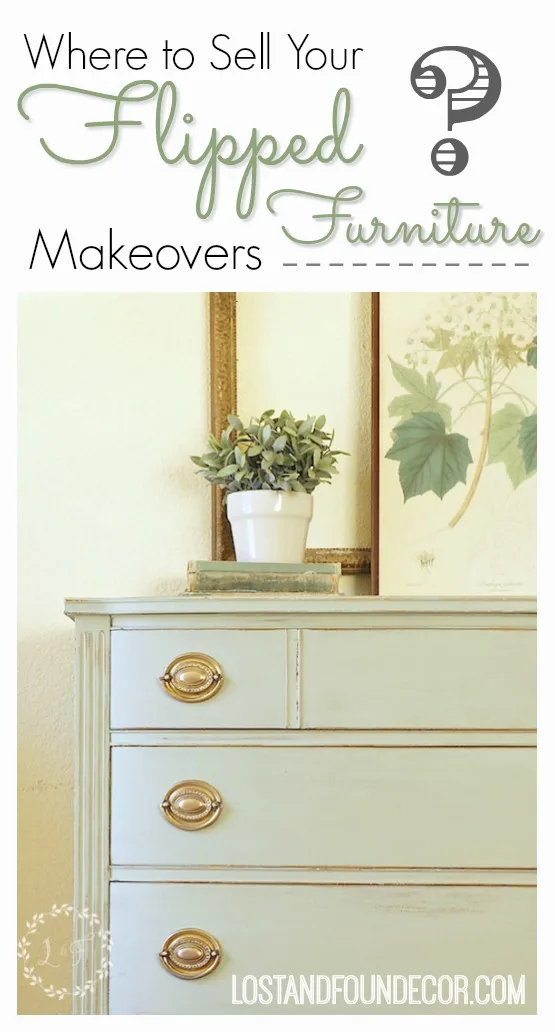
Option 1: Sell from Your Home
This is likely the starting place for most people who paint and sell furniture. Probably, you’ve been doing some pieces for your own home, and maybe for a few close friends or family, then you have the idea, “Why don’t I try to sell some of these pieces?”
Selling out of your home is a great starting option. It requires no financial investment, and you can run things completely on your own schedule.
When you sell from your home, you have complete control over how, when, and to whom you sell your piece.
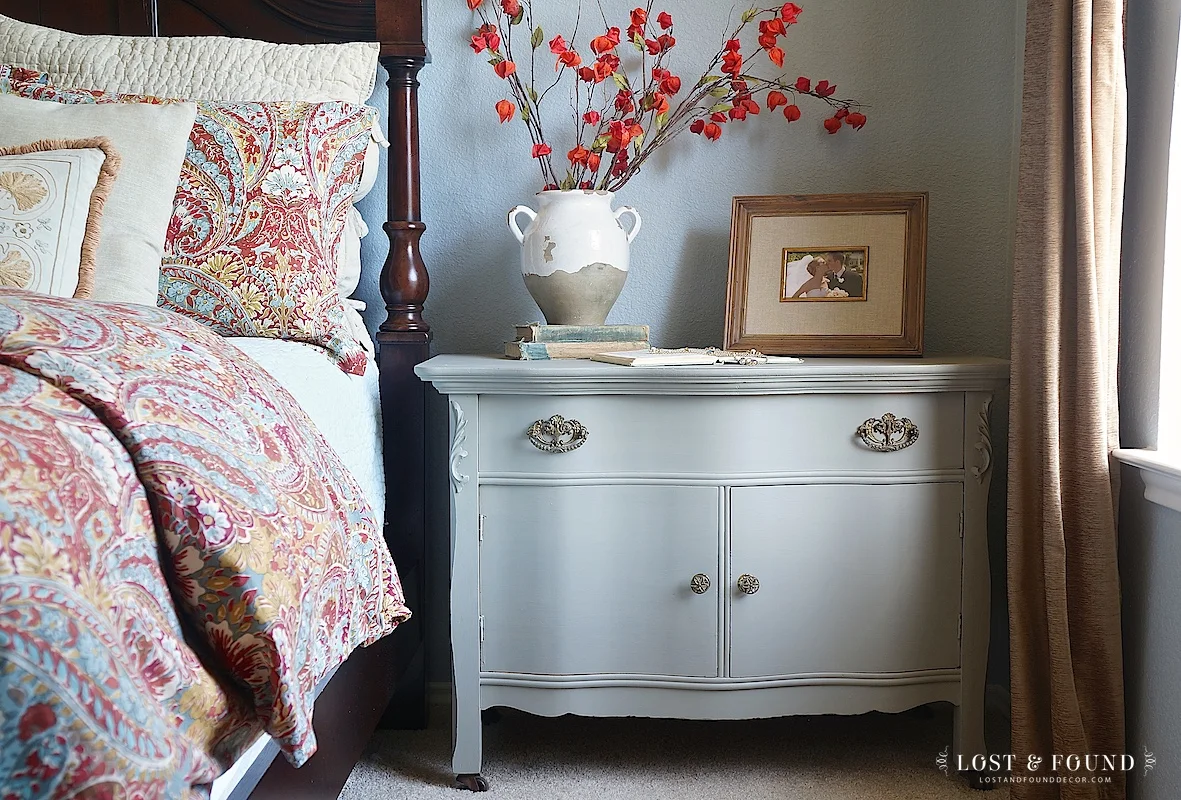
The biggest drawback though to selling out of your home is the lack of natural customer traffic. If you’re selling out of your home, you have to find a way to market your pieces to your audience.
Most likely, that will be online, unless you live in a very small area that still has an active, local paper with classified section. If you don’t advertise your pieces though, nobody will know you have them for sale!
Since most of you will be advertising online, let’s look at your online options:
1. Craigslist–Free to sign up. Load up a photo and dimensions of your piece for sale, as well as price, and contact information.
You can choose to share your phone number to receive text or phone calls from interested buyers, or keep it completely anonymous by only receiving emails through the Craigslist server (*Note–I have found communicating with buyers via text to be the most effective method).
You can also choose to have the buyer come to your home to see the piece, or to meet them at another location.
2. Facebook Garage Sale Groups–Free with a Facebook account. In the search bar, type in “garage sale” or “furniture sale,” then select the Groups tab to view groups in your area you can join.
Each group has specific rules, so read them carefully. Post a picture of your piece, along with dimensions, price, and where you are located.
Then buyers will que up in the comments by responding “want” or “interested.” Like Craigslist, you then set-up a place for the buyer to come, whether your home or another location.
Some people prefer Facebook groups because there are rules for how the transaction is supposed to work and you can actually see the people (via their profile pictures) that you are working with.
3. Other sale phone apps, like OfferUp and VarageSale. They work similar to the above to, just directly through your mobile device.
The main drawback I have found to online advertising is that you wind up constantly checking your listing and communicating with interested customers throughout the day.
That may not be an issue for you, but for me it interrupts the rest of my daily activities. Personally I don’t care for checking my phone or opening my laptop every few minutes, and when you’re promoting online, customers expect prompt responses or they often move on.
So be prepared to stay active with your online promotions throughout the day and evening.
Selling out of your home can be a great option, but like I said above, no option is perfect!
Pros:
- No overhead cost, no rent or market fees
- Complete control over who sees your piece and when you decide to show it
- No need to haul large pieces back and forth to another location for set-up
- Can insist on payments in cash (which means you don’t lost any $ on credit card fees)
- No lease or long-term agreement has to be made, so you can “test the waters” of selling your pieces without committing to continue
Cons:
- Have to have a marketing strategy and work to get your pieces in front of customers
- Pieces are stored in your home until they sell, sometimes causing storage issues
- Are you comfortable having strangers in your home? Do you prefer to keep your work life and home life separate? Selling out of your home can put a strain on your comfort level in these two areas
Option 2: Sell Out of a Store
Maybe you’ve been selling out of your home for awhile and you’re ready to take the business to the next level. Or maybe you’re just starting out, but want to keep as much of your work outside of your home if you can. If that’s the case, then selling your pieces out of a store may be right for you.
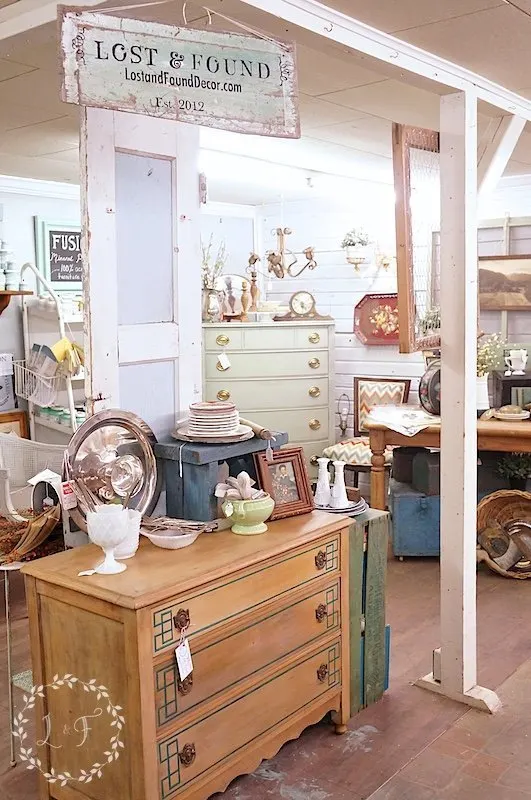
This option has been my main plan for the past 4 years. I’ve had my pieces for sale at a local antique mall and it has worked really well for me (you can read more tips about how I run my antique booth space here).
Yes . . . There is some financial investment up front. Yes . . . I do have to transport my finished pieces to my space. Yes . . . I do pay taxes and had to do some additional work to register my business.
But the payoff for those things is the consistent foot traffic that comes by and sees my pieces on a daily basis.
Like I mentioned above, I struggle with the business of promoting my pieces online and interacting with potential buyers throughout the day–not that I don’t enjoy interacting with people who buy my pieces!
For me though, being a mom at home with 3 little ones is about all the daily interaction I can handle! It’s tough for me to keep up with the texts, messages, and comments that go on when I’m trying to sell my pieces from my home.
So I really appreciate that I can just take my pieces up to my space and leave them there . . . while the mall employees do all of the customer interaction work on my behalf.
What makes a good place for you to sell your pieces?
1. Location, location, location! Look for a flea market, antique mall, or boutique store in a high traffic, retail area. You will greatly benefit from all of that regular foot traffic!
2. A Shop with Other Items in Sync with Your Style. If you specialize in mid-century modern pieces, you don’t want to be selling at a shabby-chic styled store, or vice versa.
Or if your pieces are in a very specific niche–like children’s table and chair sets–look for stores that tailor to your niche audience–i.e. a children’s boutique store. Make sense?
3. Reasonable Rent and Fees. How do you know what’s reasonable? Do your homework! Check out the rental rates and fees at several places.
I can tell you, there is a huge variance in what different shops ask for! If you’re paying too much out of pocket in rent and fees, it will be hard for you to make enough to cover your cost.
In my experience, rental rates range from $2 a square foot to $5 a square foot, depending upon the location and the type of space, and fees average around 10% of your sales. If you’re starting out, I would encourage you to shop around until you find a mall that seems to charge appropriately.
A little bit of creativity can take you a long way in finding a good place to sell your pieces. Flea markets and antique malls aren’t the only options. You can also try:
- small boutiques that specialize in home decor
- furniture consignment stores
- cute, trendy, local shops that have a loyal following in your area, even if they don’t sell furniture usually!
- bi-annual children’s consignment sales (especially if you sell pieces like dressers, beds, or children’s chairs. etc)
- annual pop-up markets, like Vintage Market Days
The last option is to open up your own storefront, but for most of us I am going to guess that’s out of our reach! I am hoping, one day, to have my own brick-and-mortar store, but remember the 3 little kids thing? So for now, I will continue with a rented space.
So pros and cons of this option, in summary:
Pros:
- Regular foot traffic exposes your pieces to a wider audience
- Don’t have to manage transactions and customer relations
- Less pieces stored in your home while they’re waiting to sell, you have a place to take them!
Cons:
- Requires a financial investment of paying rent and/or fees
- Usually requires your business to be registered and to have sales tax collected
- Stocking and working in your space is limited to hours the store is open, so a more fixed schedule
- Hauling your finished pieces one more time up to your space!
Option 3: Sell your Pieces Online and Ship
For this option we’re talking about selling your pieces through sites like Etsy and Ebay, via Instagram, or through your own blog or website.
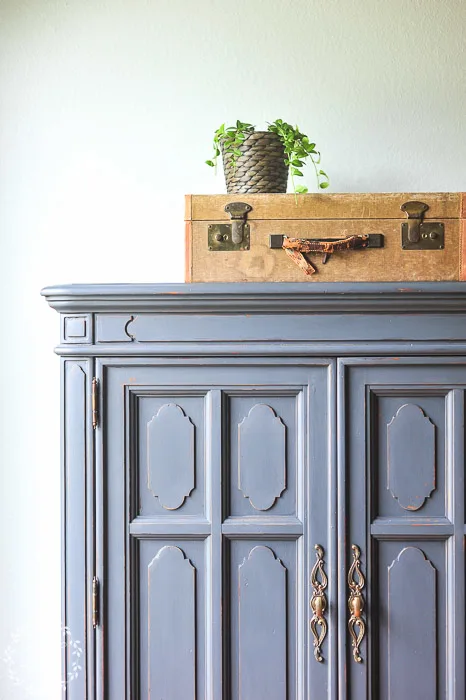
I’ve known several people who have had great success making a name for themselves outside of their local area and now sell their pieces online to ship all over the country. It’s kinda fun to think that something you paint may wind up clear across the continent!
Selling your pieces online requires some initial investment, either financially by purchasing a website domain, or time-wise in creating a virtual shop and an online platform.
Then there are photos to be shot and edited, measurements and descriptions to be written, shipping rates to be calculated, and payment options to be set-up . . . It’s a lot of work if you don’t already have an online presence!
It can be a great middle-ground option for you though if you don’t want to go 100% either with Option 1 or Option 2. It can also be a good add-on to your already established business if you have been painting and selling locally for sometime.
Here are a few tips to sell online and ship with success:
- Take multiple, high quality photos of your pieces. Style them well and show them off! Low quality photos won’t sell your piece.
- Always provide detailed descriptions of your pieces, including any potential faults or issues. If your piece has sticky drawers or a chip missing out of a leg, you want to (tactfully) include that in your description so a customer isn’t surprised.
- Set up a PayPal business account where you can accept online payments via credit card, even if the buyer does not have their own PayPal account.
- Open a uShip account and keep up contact with good shippers you have worked with in the past. Stockpile excess shipping supplies and use to wrap and protect your pieces when they ship.
In my experience, online selling works the best with your higher end pieces. Shipping furniture is expensive! If you’re selling smaller pieces or basic, standard-issue pieces, you’re asking price will likely wind up being less than the shipping cost, which just winds up looking kinda strange.
Most people won’t want to buy a small, $150 desk and then pay $300 to ship it. But the person who is in love with your extra-special, 9-drawer French Provincial dresser that is priced at $600 . . . Well, to that customer an extra $300 in shipping is worth it for them to get their dream piece of furniture!
Higher-end customers are the ones willing to pay those expensive shipping fees, and they are attracted to unique, special, high-quality pieces. So if you’re going to try the online route, make sure you have amazing things!
In summary, here are the pros and cons of selling online and shipping:
Pros:
- No rent or fees taken by shop owners
- No need to have customers in your home
- Building a name for your brand and your work outside of your local area can create new opportunities
- The excitement of knowing your piece is headed somewhere special!
Cons:
- Time and money spent on setting up your online presence
- Storing pieces in your home until they sell
- Negotiating shipping rates with shippers and packaging up your pieces
- Making sure you explain every detail of your piece accurately since the customer doesn’t have the chance to see it in person before they buy
Wow, that was a long post! If you read all the way to here, kudos to you 🙂 I hope walking through these options has been helpful, and if you have any additional experience and thoughts to add, please share!
Thanks so much for following along Happy Flipping!



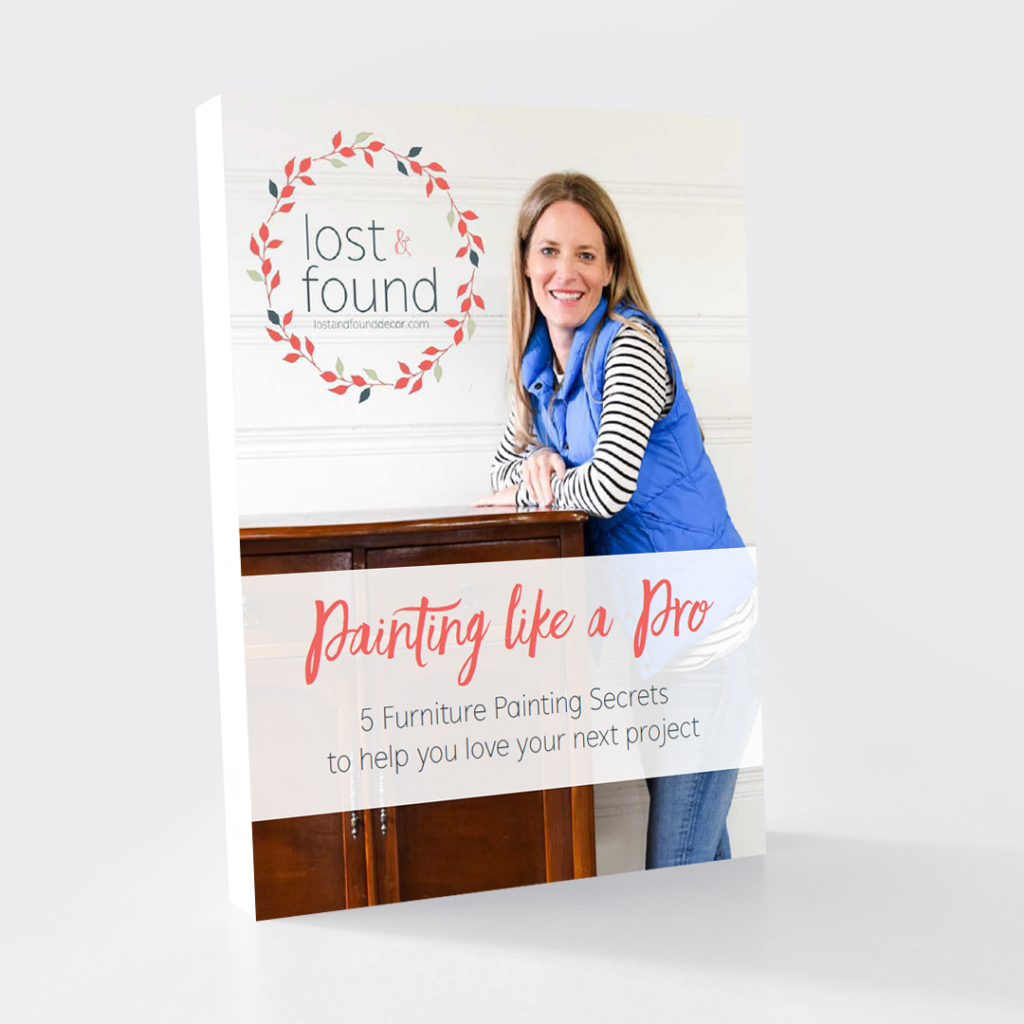
Dustin
Tuesday 1st of August 2023
Thank you for these tips and sharing your experience. It has been so hard to get the traffic with Facebook marketplace. Reading your article helped me look into stores that may want to sell my furniture. Thanks again.
Melanie Alexander
Friday 4th of August 2023
You're so welcome! Yes, Fb Marketplace can be really flooded. I hope you find a great location for your pieces :)
Vicki @ EntriWays
Tuesday 6th of September 2016
Thank you for this post. I've been selling on CraigsList and Facebook yard sale sites for a few years now. I'd love to sell in a store but haven't been able to find the right retail location yet, the idea of carting large furniture back & forth is daunting, and I haven't been able to find a location with enough traffic to imagine it covering the rental costs. Consignment shops only keep your items for 60 days and I've gotten them back damaged so I don't do that anymore. I think I'm ready to try to the shipping option though. I already take the photos, write the descriptions, and have a website so I think this may be a good next step. Thank you for the UShip suggestion.
Melanie
Tuesday 13th of September 2016
If you're getting back damaged things Vicki from consignment shops then I agree those aren't the way to go either! Let me know how the shipping goes--hope it works out well for you!
Vicki @ EntriWays
Tuesday 6th of September 2016
Thank you for this post. I've been selling on CraigsList and Facebook yard sale sites for a few years now. I'd love to sell in a store but haven't been able to find the right retail location yet, the idea of carting large furniture back & forth is daunting, and I haven't been able to find a location with enough traffic to imagine it covering the rental costs. Consignment shops only keep your items for 60 days and I've gotten them back damaged so I don't do that anymore. I think I'm ready to try to the shipping option though. I already take the photos, write the descriptions, and have a website so I think this may be a good next step. Thank you for the UShip suggestion.
Melanie
Tuesday 13th of September 2016
If you're getting back damaged things Vicki from consignment shops then I agree those aren't the way to go either! Let me know how the shipping goes--hope it works out well for you!
June
Tuesday 30th of August 2016
Ohhh thank you good advice!
June
Tuesday 30th of August 2016
Ohhh thank you good advice!